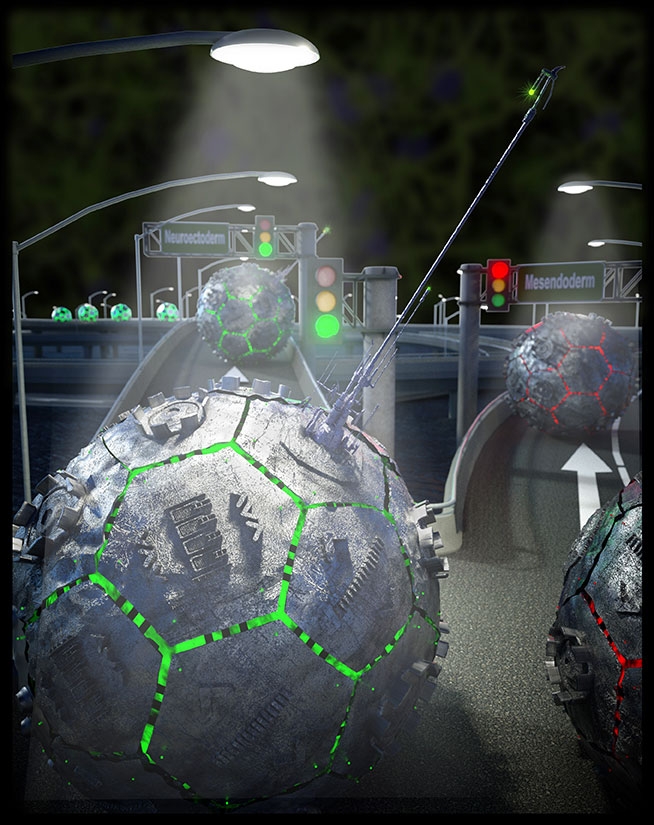At the earliest stages of development, a human is essentially a small mass of identical stem cells, each endowed with tremendous potential. Those undifferentiated stem cells can turn into the various cell types that become the parts of the body. But how is it, exaclty, that a stem cell goes from being indistinguishable from its neighbors to having a specific structure and specialized function?
A large part of that mystery was solved at UC Santa Barbara's Neuroscience Research Institute, as scientists witnessed the pivotal moment when stem cells begin to morph into neuroectoderms, the precursor to brain cells. Kenneth S. Kosik, Harriman Professor of Neuroscience Research in the Department of Molecular, Cellular, and Developmental Biology, and postdoctoral fellow Jiwon Jang have described a series of steps along a pathway they have labeled the PAN (Primary cilium, Autophagy Nrf2) axis. The pathway, they say, appears to determine the cell’s fate.
The PAN axis emerges before the cells show any hint of going down a lineage that will ultimately turn them into neurons, explained Kosik. During the Gap 1 (G1) phase of the eukaryotic cell cycle, the cells may become either neuroectoderms or mesoendoderms — both precursors to muscles and organs — or they may continue to divide into more identical undifferentiated cells.
During G1, an individual cell extrudes a tiny structure called a primary cilium, which acts like an antenna, taking in information about the environment. In the would-be neuroectoderms, the researchers found, the G1 phase lengthens. The longer the duration of G1, they say, the more signals the cilium receives, and that longer exposure is one indication that the cell is becoming a neuroectoderm. The type of signals the cells receive during this interval may also change.
The primary cilium then activates a process within the cell called autophagy — essentially a self-cleaning, trash-disposal operation in which damaged or no-longer-needed cell structures are degraded and recycled.
Next, levels of a protein called Nrf2 decrease. Nrf2 is essential to the health of the undifferentiated cells, said Kosik, because it protects them from toxins and free radicals in an effort to preserve the integrity of the genome. In cells that begin to differentiate, Nrf2 levels drop, because at that point, the cell can cut back a bit on generating perfect copies of the genome.
The discovery of this very early sequence in the development of the cell illuminates a once-missing piece of fundamental knowledge in the field. Future research may apply the new findings to pathological cell development, such as in tumors, or investigate even earlier events in cell development.


